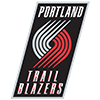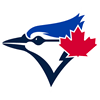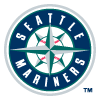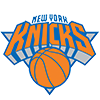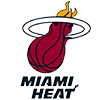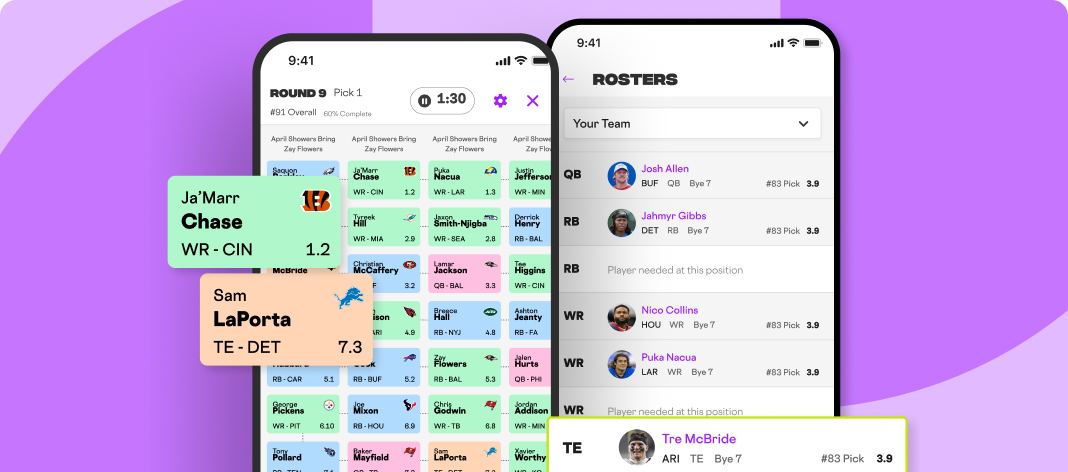For all the latest injury updates, head to our MLB Injury News page.
Are we any good at predicting injuries? That's the question I sought to answer when I asked leaguemates, co-workers and members of the RotoWire Discord to participate in a survey back in December, aiming to establish which players were perceived as injury risks by the fanatsy community and which were seen as safe and reliable.
For a full explanation of the process, check out the first article in this series, published on the eve of the regular season. The short version: participants were asked which of two pitchers was a bigger injury risk, and after votes on more than 2,000 pairings, the pitchers were sorted based on a system similar to an ELO score, where they got more credit for beating pitchers who ranked highly themselves.

The survey led to the following groupings, where the top 85 pitchers by NFBC ADP at the time the survey was conducted in December were split into five equal tiers based on how the participants viewed their injury risk:
For all the latest injury updates, head to our MLB Injury News page.
Are we any good at predicting injuries? That's the question I sought to answer when I asked leaguemates, co-workers and members of the RotoWire Discord to participate in a survey back in December, aiming to establish which players were perceived as injury risks by the fanatsy community and which were seen as safe and reliable.
For a full explanation of the process, check out the first article in this series, published on the eve of the regular season. The short version: participants were asked which of two pitchers was a bigger injury risk, and after votes on more than 2,000 pairings, the pitchers were sorted based on a system similar to an ELO score, where they got more credit for beating pitchers who ranked highly themselves.

The survey led to the following groupings, where the top 85 pitchers by NFBC ADP at the time the survey was conducted in December were split into five equal tiers based on how the participants viewed their injury risk:
It's important to note that these are not meant to be taken as reflections of the pitcher's actual injury risk. Not only is that difficult to ascertain for medical professionals, let alone fantasy baseball players, it wasn't what we're trying to establish with the survey. The goal was to establish pitchers' perceived injury risk, in an effort to find out whether that public perception has any predictive value.
We're now two months into the season, so it's time to investigate whether there's any correlation between our preseason perception of injury risk and pitchers' actual ability to stay healthy. The early returns, at least viewed through the simple lens of the number of pitchers in each tier who have hit the injured list, aren't particularly encouraging:
Tier | Pitchers With at Least One IL stint | Number | % |
|---|---|---|---|
A | Kirby, Nola, Bello, Olson, Blanco, Imanaga, Arrighetti | 7 | 41% |
B | Miller, P. Lopez, Lugo, Suarez, Gilbert, Steele, Ragans | 7 | 41% |
C | Crawford, Manaea, King, Schmidt, Houck, Sasaki, Gil, Jones, R. Lopez | 9 | 53% |
D | Snell, Eflin, Greene, Rodriguez, Cole, Rocker, Darvish, Strider | 8 | 47% |
F | Buehler, McClanahan, Woodruff, Glasnow | 4 | 24% |
Total | 35 | 41% |
The first four tiers are roughly equal, and then the tier full of the supposedly biggest injury risks is the safest of them all. Even if we count the pitcher half of Ohtani as effectively being on the injured list, or if we exclude him from the sample entirely because he's in a unique situation, the percentage of pitchers to hit the injured list from the F tier rises to 29 or 25 percent.
We can get much more specific than looking at the raw number of injuries, however. First, it's important to remember that not all injuries are created equal. The above chart counts all trips to the injured list, from blister-induced minimum-length stays to season-ending elbow surgery, as the same. Let's look at the same five tiers again, this time noting the number of arm injuries as well as the average number of starts the pitchers in each tier have been able to make:
Tier | Elbow/Forearm Injuries | Lat/Shoulder/Triceps Injuries | Other Injuries | Avg # of Starts |
|---|---|---|---|---|
A | 1 | 2 | 4 | 9.1 |
B | 3 | 0 | 4 | 9.4 |
C | 2 | 4 | 2 | 7.1 |
D* | 4 | 4 | 2 | 7.1 |
F** | 0 | 4 | 1 | 8.5 |
Total | 10 | 14 | 13 | 8.2 |
*Grayson Rodriguez has dealt with both elbow and lat injuries; Spencer Strider has dealt with elbow and hasmtring injuries
**Brandon Woodruff has dealt with shoulder and ankle injuries
Here is where the results start looking a bit better for our collective ability to predict pitcher injuries. The raw number of injuries may be nearly equal across most of the tiers, but the arm injuries that we're particularly worried about are concentrated in the groups of supposedly higher-risk pitchers. 17.6 percent of pitchers in tiers A and B have hit the IL with an arm injury, while the number is twice as high (35.3 percent) for pitchers in the lower three tiers.
As a result, the pitchers in tiers A and B have made 22 percent more starts on average than the rest of the group. If all five tiers continue missing time at the same rate the rest of the season, that would equate to roughly 28 starts per pitcher in tiers A and B and 23 starts per pitcher in tiers C, D and F.
Availability isn't the only thing that matters for fantasy teams, of course. We want our players to not only be able to pitch but to pitch well. One way injury-proneness can show up is by making pitchers unreliable when they're on the mound due to health issues which affect a pitcher's delivery but not severely enough to send him to the injured list.
Is that happening? The table below compares each tier's preseason projected ERA and WHIP (according to ATC) with their actual ERA and WHIP in an effort to find out whether any of these groups are underperforming.
Tier | Projected ERA | Actual ERA | Diff | Projected WHIP | Actual WHIP | Diff |
|---|---|---|---|---|---|---|
A | 3.82 | 3.53 | -0.29 | 1.20 | 1.20 | +0.00 |
B | 3.74 | 3.53 | -0.19 | 1.17 | 1.23 | +0.06 |
C | 3.81 | 3.99 | +0.18 | 1.20 | 1.20 | +0.00 |
D | 3.73 | 3.72 | -0.01 | 1.17 | 1.10 | -0.07 |
F | 3.69 | 2.75 | -0.94 | 1.17 | 1.11 | -0.06 |
Perhaps unexpectedly, it's hard to glean much of anything from the above table. Tiers A and B are in fact outperforming their ERA projections, but the same can't be said for their WHIP. Meanwhile, tier C is lagging in ERA but just fine in WHIP, while tier D is right in line with expectations for ERA and better than expected in WHIP, despite being the group that's dealt with the most arm injuries.
Which brings us, again, to the unusual tier F. Not only has the group supposedly full of the biggest injury risks been hit with the fewest injuries so far, it's also the only group that's fared best compared to its projected ERA and WHIP, beating the former mark by nearly a full run. What is going on here? Why do we seem to be generally pretty good at identifying who the healthier pitchers are, with the notable exception of the pitchers we're collectively most scared of?
I see two possible explanations. The pessimistic explanation is that we aren't, in fact, bad at evaluating those pitchers. It's still May, and there's still plenty of time for them to get hurt. Would it surprise you if they'd caught up to the rest of the pack, or even pulled into the lead, by the time I next update this study over the summer?
The second explanation is that the pitchers in group F, or at least a large number of them, have something in common that causes us to worry about their health unnecessarily. Let's take a quick look at the pitchers in that group who have managed to stay healthy thus far to see if any themes emerge among the factors that likely led to their low ranking:
- Nathan Eovaldi: 35 years old; has reached 30 starts just twice in 13 seasons; has had Tommy John surgery twice (most recently in 2016)
- Kodai Senga: 32 years old; made just a single start last season due to shoulder and calf injuries
- Robbie Ray: 33 years old; underwent Tommy John surgery in 2023 (returned to make seven starts last year)
- Gavin Williams: limited to 16 starts last year due to elbow inflammation
- Carlos Rodon: 32 years old; underwent Tommy John surgery in 2019; made just 14 starts in 2023 due to forearm and back issues
- Garrett Crochet: underwent Tommy John surgery in 2022; increased his innings total by 108.2 from 2023 to 2024
- Chris Sale: 36 years old; underwent Tommy John surgery in 2020; missed end of last year and playoffs with back issues; hasn't reached 30 starts since 2017
- Shane Baz: underwent both arthroscopic elbow surgery and Tommy John surgery in 2022
- Drew Rasmussen: underwent Tommy John surgery twice and internal brace surgery once (most recently in 2023)
- Nick Lodolo: made four separate trips to the injured list last season and a total of seven over the last three years, though none of them were due to arm injuries
- Max Fried: 31 years old; underwent Tommy John surgery back in 2014; limited to 14 starts by forearm strain in 2023; briefly hit the injured list with another forearm issue last year
- Jacob deGrom: 36 years old; hasn't made more than 15 starts sicne 2019; underwent Tommy John surgery twice (most recently in 2023); returned for just three short starts late last year
One factor stands out immediately: nine of the 12 names listed above have undergone Tommy John surgery. Elbow troubles significant enough to require more than a year-long absence naturally earn a pitcher a reputation for lacking durability, but is it possible that reputation sticks around longer than it ought to? Is there perhaps profit to be found in pitchers who have undergone major elbow surgery in the recent past but who have since returned and been effective?
If we get to the end of the season and the pitchers with F health grades remain surprisingly healthy, that could be a wise conclusion to draw. It's still May, though, so there's plenty of time for the league's supposedly riskiest starters to remind us why so many drafters were afraid to select them back in draft season.









